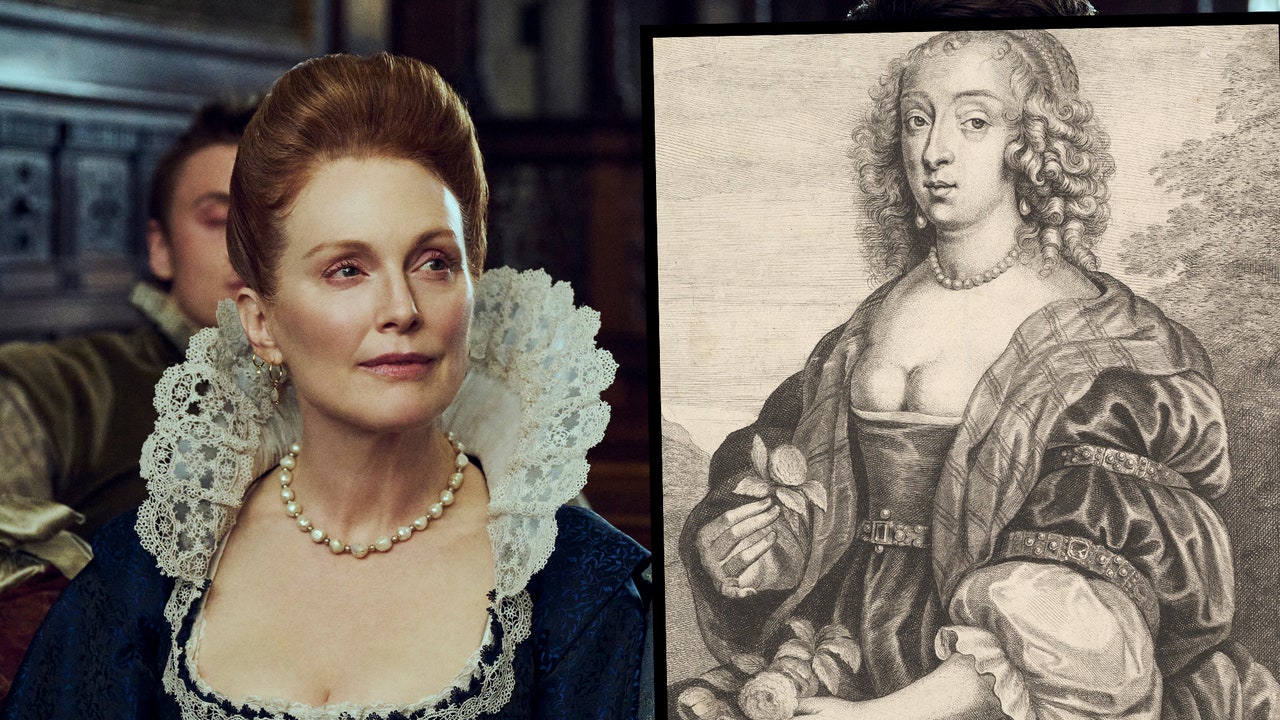Mary Villiers emerges as a prominent historical figure known for her remarkable social ascent, strategically captivating King James through her attractive son, which explains why her story is only now coming to light.

Starz’s series introduces the audience to Mary and George Villiers, a mother-son duo renowned for their social climbing endeavors in the 17th century. Portrayed by Julianne Moore and Nicholas Galitzine, Mary takes center stage in the narrative as the mastermind behind her son’s entanglement in King James’s (played by Tony Curran) inner circle and subsequent rise to influence. To pave the way for her family’s prosperity, she orchestrates the downfall of a court favorite and orchestrates a strategic marriage for her mentally unstable son, George’s elder brother, at the tender age of 13.
Mary’s unyielding determination pays off handsomely as she transitions from a widowed mother of four with no assets to a countess within King James’s court, eventually finding her resting place at Westminster Abbey among esteemed royalty and literary figures.
The creator of Mary & George, D.C. Moore, reflects on Mary’s extraordinary journey, emphasizing her agency, intelligence, and audacity in a society where women held minimal legal rights. Despite her pivotal role, Mary remains an overlooked figure in historical discourse, a void that the series aims to rectify, as noted by executive producer Liza Marshall.
Drawing inspiration from Benjamin Woolley’s work The King’s Assassin: The Fatal Affair of George Villiers and James I, the series sheds light on Mary’s character, described through history as “busy, intriguing, masculine, and dangerous.” Woolley underscores Mary’s significance in the monarch’s inner circle, where she wielded considerable influence, even aiding in James’s medical care during his final days.
While historical records offer limited insights into Mary’s persona, it is evident that she pinned her hopes on George, her favored child among a brood plagued by mental health issues and unreliability. Mary’s resourcefulness shines through as she secures funds through marriage to provide George with a refined education in France, grooming him for courtly life under her discreet guidance.
The narrative delves into George’s captivating allure, with Marshall highlighting his magnetic presence that left a lasting impression on observers. George’s physical charms were leveraged by Mary to captivate King James, a monarch known for his male companionships, mirroring the power dynamics portrayed in The Favourite.
The series boldly navigates explicit queer themes, showcasing how sex and political maneuvering intertwined in the pursuit of power. Moore emphasizes the unapologetic portrayal of historical realities, steering clear of conventional period drama tropes to capture the era’s essence authentically.
As George ascends to prominence in James’s court, Mary’s influence grows, culminating in her elevation to a countess—a title specially crafted by the king to honor her pivotal role. Their memorials at Westminster Abbey stand as testaments to their enduring legacy, with Woolley commending Mary’s resurgence in historical narratives.
Despite their shared success, tensions brew between Mary and George as power dynamics shift, leading to George’s eventual downfall and tragic demise. While historical accounts remain scant on their later relationship, the narrative hints at the complexities of their intertwined fates and the consequences of hubris and political missteps.
Marshall reflects on George’s fatal misjudgments, contrasting them with Mary’s shrewdness and foresight, underscoring the enduring allure of Mary Villiers—a figure whose cunning and ambition have finally found recognition in contemporary retellings.
